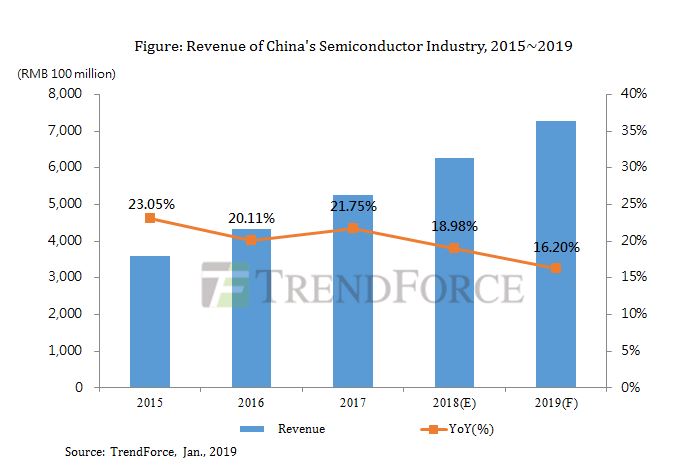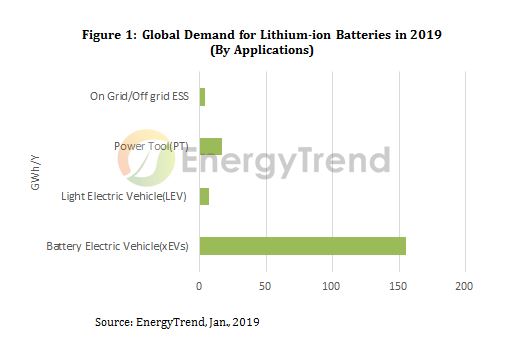Optoelectronics, Sensors/Actuators, Discretes Climb Again
In 2018, a mixed bag of higher prices, shortages, and new imaging applications is driving up total O-S-D sales by 11% and expected to set a ninth consecutive record-high level of combined revenues.
With tight supplies of widely used power transistors and diodes driving up prices and new optical-imaging applications moving into more systems, the diverse marketplace for optoelectronics, sensors and actuators, and discrete semiconductors (O-S-D) is on pace to grow by 11% for the second year in a row in 2018 and set a ninth consecutive record-high level in combine annual revenues worldwide. An update to IC Insights’ O-S-D forecast shows total sales across the three market segments reaching $83.2 billion this year, followed by 9% growth in 2019, when revenues are expected to hit an all-time high of $90.6 billion
In 2017, O-S-D revenues grew 11% with total unit shipments also rising 11%, but in 2018, combined sales of optoelectronics, sensors/actuators, and discretes are expected to increase by about 11% with overall unit volumes rising 9% and average selling prices (ASPs) for products in the three market segments being nearly 1.5% higher this year. Shortages of power transistors, diodes, and other widely used commodity parts in 2018 are expected to drive up total discrete ASPs by nearly 8% this year and result in a strong 12% increase in sales to a record-high $27.6 billion from the current peak of $24.6 billion set in 2017.
Optoelectronics sales are forecast to rise nearly 11% in 2018 to reach an all-time high of $40.9 billion, with unit shipments climbing 18% this year, but the ASP in this market is expected to decline by about 6% because of falling prices for some image sensors, infrared products, lasers, optocouplers, and lamp devices, which are mostly light-emitting diodes (LEDs). Optoelectronics sales are getting a tremendous boost from sharply higher demand for light sensors, which are used in automatic controls of displays in smartphones and other systems, heart rate monitoring, proximity detection, and color sensing. Light sensors along with infrared and laser transmitters are also seeing strong growth in new three-dimensional depth scanning systems and time-of-flight (ToF) cameras, which use reflected light to sense distances and are appearing in more smartphones and other applications for face recognition, 3D imaging, and virtual/augmented reality applications.
Following strong growth of 16% in both 2016 and 2017, total revenues for non-optical sensors and actuators are expected to rise 7% in 2018 to a record-high $14.8 billion with unit volume being up just 5%—the lowest rate of increase in 10 years—because of inventory adjustments in several product categories, low smartphone growth, and some production constraints. Strong automotive sensor demand has propped up total sensors/actuator sales growth and helped lift ASPs by 2%—the first rise since 2010.
在线留言询价

Revenue Growth in China's Semiconductor Industry Would Slow Down to 16.2% in 2019 due to Pessimistic
- 一周热料
- 紧缺物料秒杀
| 型号 | 品牌 | 询价 |
|---|---|---|
| CDZVT2R20B | ROHM Semiconductor | |
| BD71847AMWV-E2 | ROHM Semiconductor | |
| MC33074DR2G | onsemi | |
| RB751G-40T2R | ROHM Semiconductor | |
| TL431ACLPR | Texas Instruments |
| 型号 | 品牌 | 抢购 |
|---|---|---|
| IPZ40N04S5L4R8ATMA1 | Infineon Technologies | |
| BP3621 | ROHM Semiconductor | |
| TPS63050YFFR | Texas Instruments | |
| ESR03EZPJ151 | ROHM Semiconductor | |
| STM32F429IGT6 | STMicroelectronics | |
| BU33JA2MNVX-CTL | ROHM Semiconductor |
- 周排行榜
- 月排行榜
AMEYA360公众号二维码
识别二维码,即可关注



























